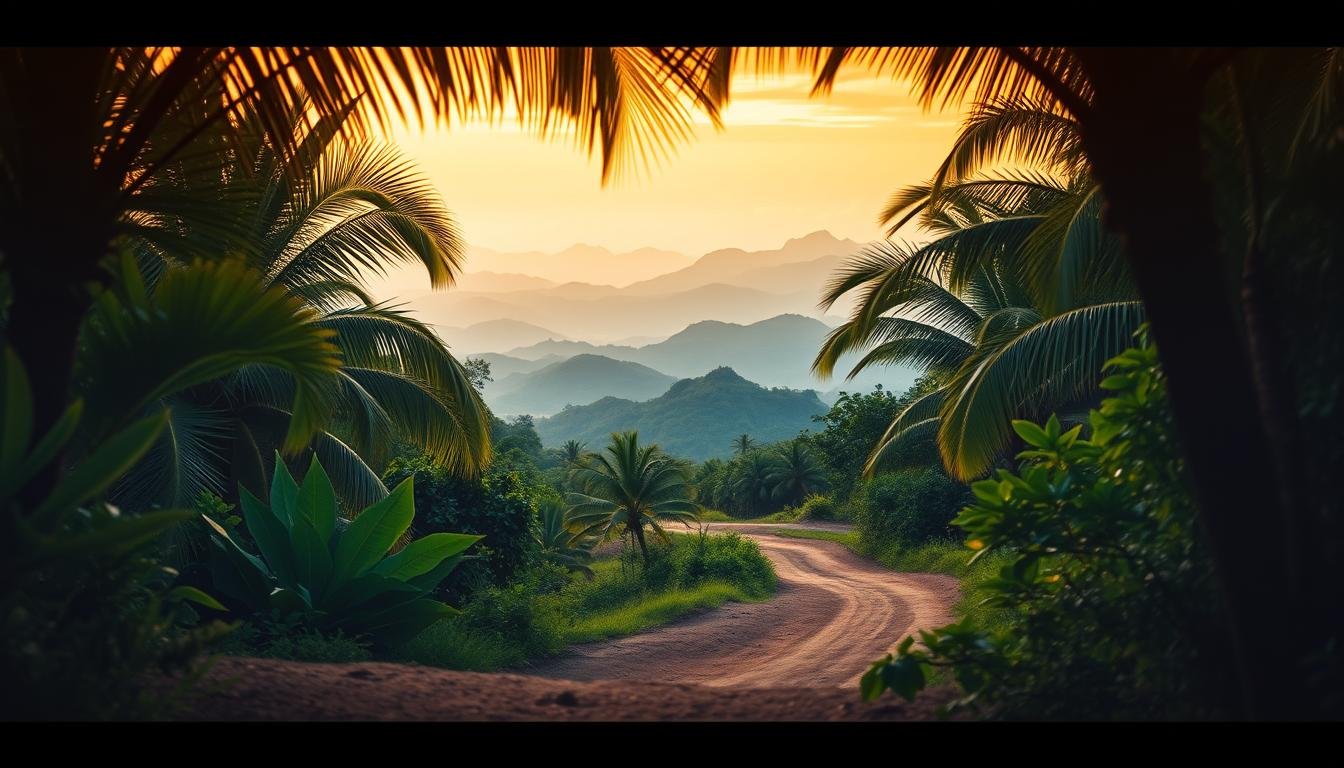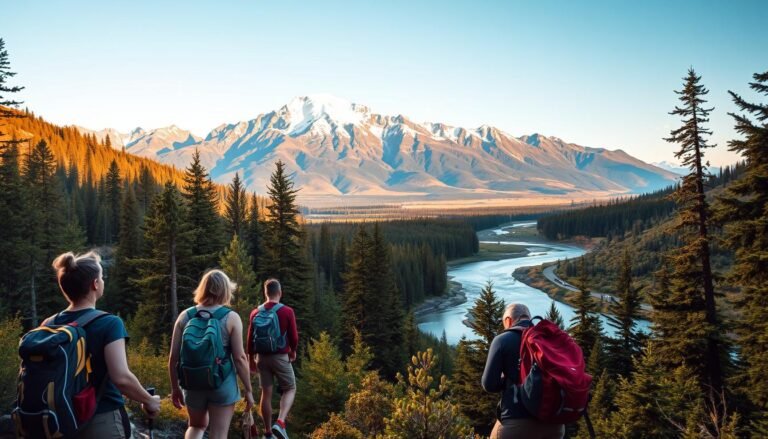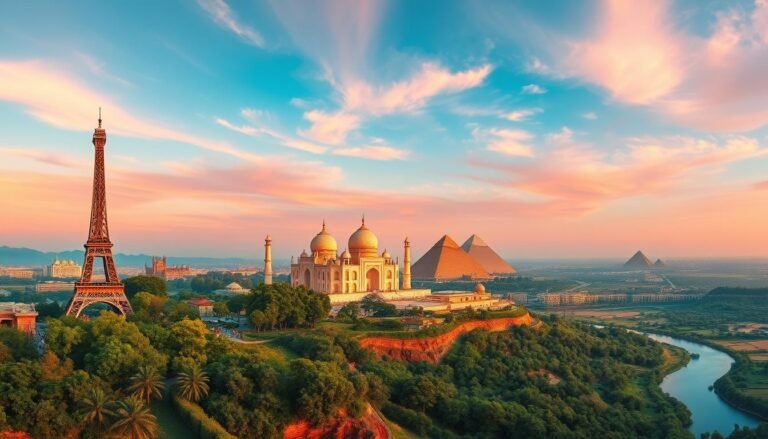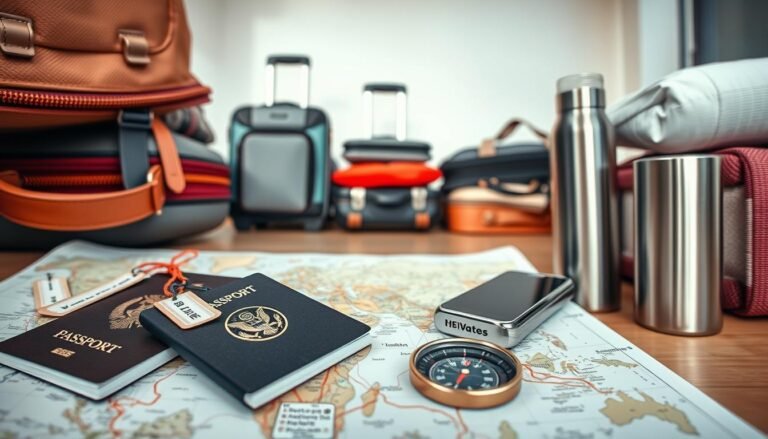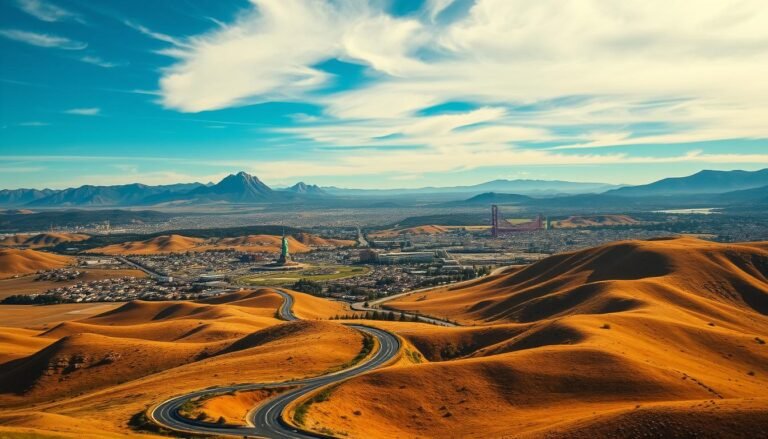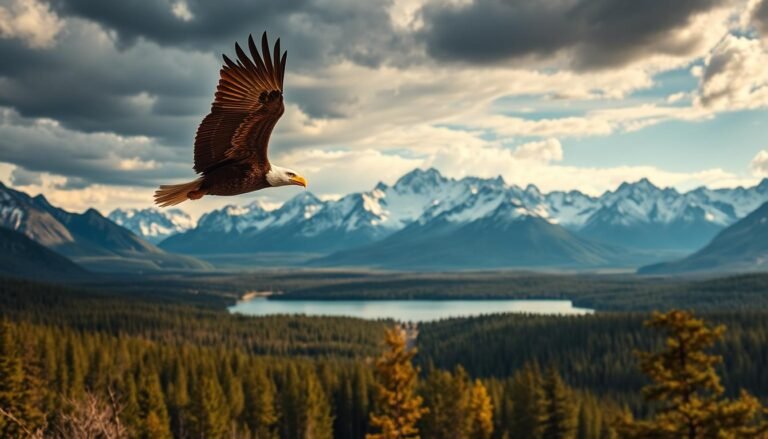Explore the Wonders of Central America: Your Travel Guide
Travel to central america: Discover the hidden gems of Central America, a fascinating region that connects Mexico to South America. This compact area is home to seven unique countries, each offering a distinct cultural, natural, and adventurous experience.
Whether you’re an adventurer, a nature lover, or a culture enthusiast, Central America has something for everyone. From ancient Mayan ruins and colonial cities to pristine beaches and active volcanoes, the region is a treasure trove of exciting experiences. As you plan your travel to this incredible region, you’ll find that it’s an increasingly popular destination for travelers from around the world, including the United Kingdom.
With this guide, you’ll be well-equipped to navigate the best that Central America has to offer, addressing common concerns about safety, budget, and logistics, and creating the perfect itinerary for your trip.
Why Travel to Central America
The allure of Central America lies in its ability to pack a multitude of experiences into a relatively compact region. This characteristic makes it an ideal destination for travelers looking to explore multiple facets of a culture and geography without excessive travel time.
The Unique Appeal of the Region
Central America offers an incredible diversity of experiences across its seven countries. From the pristine beaches and vibrant cultural scenes to the majestic volcanoes and lush cloud forests, there’s something for every kind of traveler. The region boasts an unmatched combination of natural wonders, including some of the most biodiverse ecosystems on the planet.
Unlike more heavily touristed destinations, Central America provides authentic cultural experiences and interactions with locals who are genuinely welcoming to visitors. This authenticity is a significant draw for travelers seeking a more meaningful connection with the places they visit.
| Country | Main Attractions | Experiences |
|---|---|---|
| Belize | Barrier Reef, Caye Caulker | Snorkeling, Diving |
| Guatemala | Antigua, Lake Atitlan | Cultural Exploration, Volcano Hiking |
| Costa Rica | Cloud Forests, Beaches | Wildlife Encounters, Eco-Tourism |
Breaking Past Misconceptions
Despite its many attractions, Central America has often been misunderstood due to safety concerns and misconceptions about accessibility. However, the region is generally safe for tourists, with most areas being accessible and welcoming.
The region offers exceptional value for money compared to other destinations, with affordable accommodation, transportation, and activities making it accessible for various travel budgets. By understanding the local culture and taking normal precautions, visitors can have a safe and enjoyable trip.
Understanding Central America: Countries and Geography
Connecting two vast continents, Central America’s unique geography has fostered a rich tapestry of cultures and landscapes. This region, often referred to as the land bridge between North and South America, is characterized by its seven distinct countries and diverse geographical features.
The Seven Nations of Central America
Central America comprises seven countries: Belize, Guatemala, El Salvador, Honduras, Nicaragua, Costa Rica, and Panama. Each of these countries has its own unique culture, history, and attractions, offering a wide range of experiences for travelers. From the Caribbean coast of Belize to the volcanic landscapes of Guatemala and the eco-tourism paradises of Costa Rica, the diversity within this region is remarkable.
- Belize is known for its Caribbean coastline and the Belize Barrier Reef.
- Guatemala boasts volcanic highlands and rich cultural heritage.
- Costa Rica is famous for its rainforests and eco-tourism opportunities.
This diversity is a hallmark of the region, making it a fascinating area to explore.
Geographical Highlights and Natural Features
The geographical position of Central America, bordered by the Caribbean Sea to the east and the Pacific Ocean to the west, has created a land of incredible biodiversity. The region features varied landscapes, including lowland tropical rainforests, highland cloud forests, and volcanic mountain ranges. Notable geographical highlights include Guatemala’s volcanic highlands, Belize’s barrier reef, Costa Rica’s rainforests, and Panama’s strategic isthmus.
Understanding the geographical context of Central America helps travelers appreciate the diversity of experiences and ecosystems within this relatively small region.
Planning Your Central America Trip
As you prepare for your Central America adventure, understanding the best times to visit, visa requirements, and how to allocate your time is crucial. Central America offers a rich tapestry of experiences, from lush rainforests to vibrant cultures, making it a compelling destination for travelers.
Best Time to Visit Central America
The best time to visit Central America is during the dry season, which typically runs from December to April. This period offers sunny days and minimal rainfall across most of the region, making it ideal for outdoor activities and exploration. However, it’s worth noting that the region’s climate varies significantly by country and elevation. For instance, the highlands tend to be cooler year-round, while coastal areas are generally hotter and more humid.
Travelers should also be aware of the hurricane season, which affects the Caribbean coast of Central America from June to November. Planning your trip around these weather patterns can significantly enhance your experience.
Visa Requirements and Entry Regulations
Understanding the visa requirements for each Central American country is essential for a smooth trip. Most travelers can visit without obtaining visas in advance, but the duration of stay varies. For example, Belize allows stays of up to 30 days, Costa Rica up to 180 days, and Panama up to 90 days. The Central America Border Control Agreement also facilitates travel between El Salvador, Guatemala, Honduras, and Nicaragua for up to 90 days without border checks when crossing by land.
How Long to Spend in Each Country
Deciding how many days to allocate to each country in Central America depends on your travel style and interests. For a brief visit, allocating at least 3 to 4 days per country can give you a taste of the local culture and main attractions. However, for a deeper exploration, consider spending a week or more in each country to fully immerse yourself in the local way of life and explore beyond the typical tourist destinations.
By carefully planning your travel itinerary, you can ensure a fulfilling and enjoyable journey through Central America.
Safety Considerations for Central America Travel
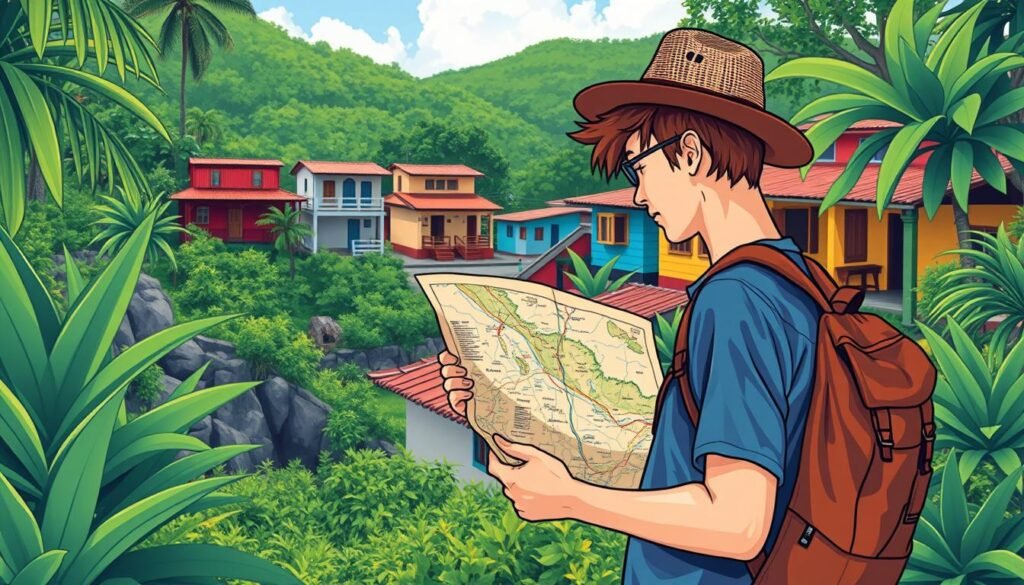
When planning a trip to Central America, understanding the safety landscape is crucial. The region is known for its diverse beauty, from volcanic landscapes to vibrant cultures, but safety can vary significantly from one country to another.
Country-Specific Safety Information
Safety in Central America is not uniform across the region. Countries like Costa Rica and Panama are generally considered safe for tourists, with low crime rates compared to other parts of the world. However, areas in Honduras, El Salvador, and Guatemala may require more caution due to higher levels of crime and gang activity.
It’s essential to stay informed about local conditions. Checking the latest travel advisories from your government’s foreign affairs department can provide valuable insights into which areas to avoid and necessary precautions to take.
Tips for Solo and Female Travelers
Solo and female travelers can have a safe and enjoyable experience in Central America by taking a few extra precautions. Avoiding walking alone at night, using reputable transportation services, and staying in well-reviewed accommodations can significantly reduce risks.
Additionally, connecting with other travelers through hostels or travel groups can enhance safety and provide opportunities to share experiences and advice.
General Safety Tips
- Avoid displaying valuables and using money belts discreetly.
- Withdraw cash inside banks or shopping malls.
- Stay alert in crowded areas and avoid night travel when possible.
- Research your accommodations in advance to ensure they are in safe neighborhoods.
By being aware of the local safety situation and taking common-sense precautions, travelers can minimize risks and enjoy the rich cultural heritage and natural beauty that Central America has to offer.
Transportation Options Across Central America
Whether you’re flying into a major hub or taking a local ‘chicken bus,’ Central America has a transportation solution for every traveler. The region’s diverse transportation network makes it relatively easy to explore the seven countries that make up Central America.
Getting There: International Flights
International access to Central America is primarily through major airports in Costa Rica (San José), Panama (Panama City), and Guatemala (Guatemala City). British Airways offers direct flights from London to Costa Rica and Cancún, while other destinations are accessible with connections via the US or Mexico. The average flight time to Cancún is approximately 11 hours.
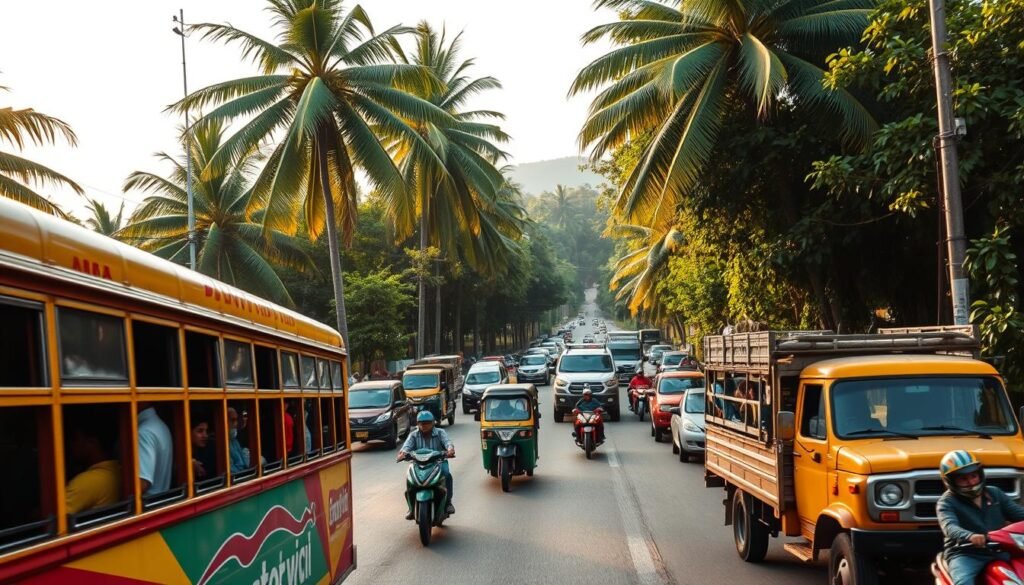
Moving Between Countries
Traveling between Central American countries can be done via regional flights on airlines like TAG Airlines, AirPanama, and Sansa Airlines. Although these flights are convenient, they tend to be more expensive than land transportation. Alternatively, shuttle services offer a comfortable and direct way to travel between popular destinations across borders, providing a good balance between comfort and cost.
Local Transportation Methods
Local transportation in Central America varies by country but often includes the colorful “chicken buses” – repurposed American school buses that are extremely affordable but can be crowded and slow. For travelers with limited time, organized tours can be an efficient way to see multiple countries, with companies like Intrepid Travel offering comprehensive itineraries.
By understanding the transportation options available, travelers can better plan their trip across Central America, whether they’re looking for the most cost-effective road travel or the quickest flight options.
Accommodation Options for Every Budget
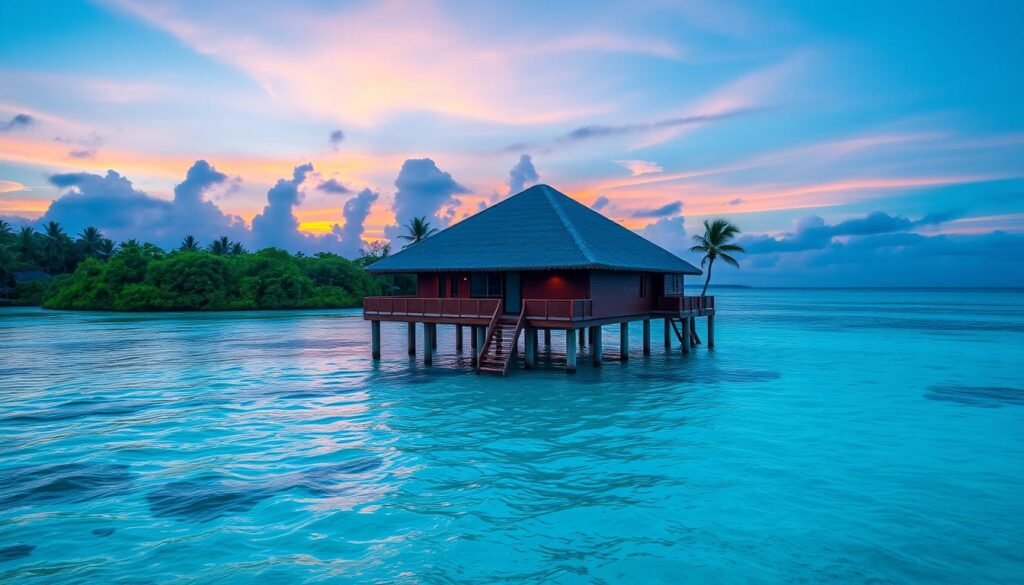
From budget-friendly hostels to luxury eco-lodges, Central America offers a diverse range of accommodations to suit every traveler’s needs. Whether you’re looking to save money or splurge, the region has something for everyone.
Hostels and Budget Stays
For budget travelers, Central America is a paradise. Hostel dorms are available throughout the region for $10-25 per night, while private rooms in hostels can be found for $30-45. Popular chains like Selina and Bigfoot Hostels offer comfortable and social environments for travelers.
Mid-Range Accommodations
Those looking for a bit more comfort without breaking the bank can opt for mid-range accommodations. Budget hotels are available for $25-35 per night, while Airbnb private rooms offer a more personalized experience for $20-40. These options provide a good balance between price and comfort.
Luxury Options
For travelers seeking a luxurious experience, Central America offers exceptional value. Boutique hotels and eco-lodges start around $100-150 per night, offering luxurious amenities and unique experiences. From overwater bungalows in Bocas del Toro, Panama to jungle lodges in Costa Rica and colonial mansions in Antigua, Guatemala, there’s no shortage of luxury accommodations to choose from.
Must-Visit Destinations in Belize
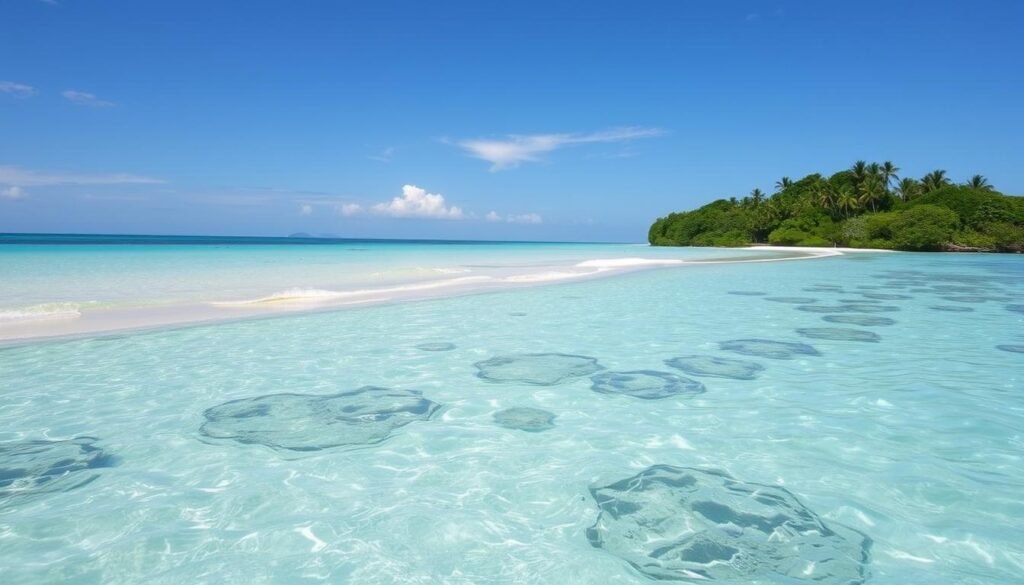
From the crystal-clear waters of the Caribbean to the lush jungles inland, Belize is a paradise for adventurers. Belize offers a perfect blend of Caribbean island vibes and inland jungle adventures, making it an ideal destination for travelers of all types.
Caye Caulker and the Barrier Reef
Caye Caulker is a laid-back island that embodies the “go slow” motto, appealing particularly to backpackers seeking a relaxed atmosphere and affordable accommodations. The island is a great base for exploring the Belize Barrier Reef, the second-longest barrier reef in the world and a UNESCO World Heritage Site, offering world-class scuba diving and snorkeling opportunities.
Popular marine activities from Caye Caulker include snorkeling with nurse sharks and rays at Shark Ray Alley, diving the famous Great Blue Hole, and swimming with gentle manatees in their natural habitat. In July, Caye Caulker hosts its famous lobster festival, offering tasty lobster and lively beach parties, making it a great time to visit Caye Caulker.
Inland Adventures: San Ignacio and Mayan Ruins
Inland Belize offers equally compelling attractions around San Ignacio, including the ATM Cave (Actun Tunichil Muknal) with its ancient Mayan artifacts and skeletal remains, and accessible Mayan ruins like Xunantunich and Cahal Pech. These sites provide a glimpse into the region’s rich history and cultural heritage.
Exploring these inland destinations allows visitors to experience the full depth of Belize’s history and natural beauty, from the jungles to the ancient ruins. Whether you’re interested in history, culture, or adventure, Caye Caulker and inland Belize have something to offer.
Exploring Guatemala’s Cultural and Natural Wonders
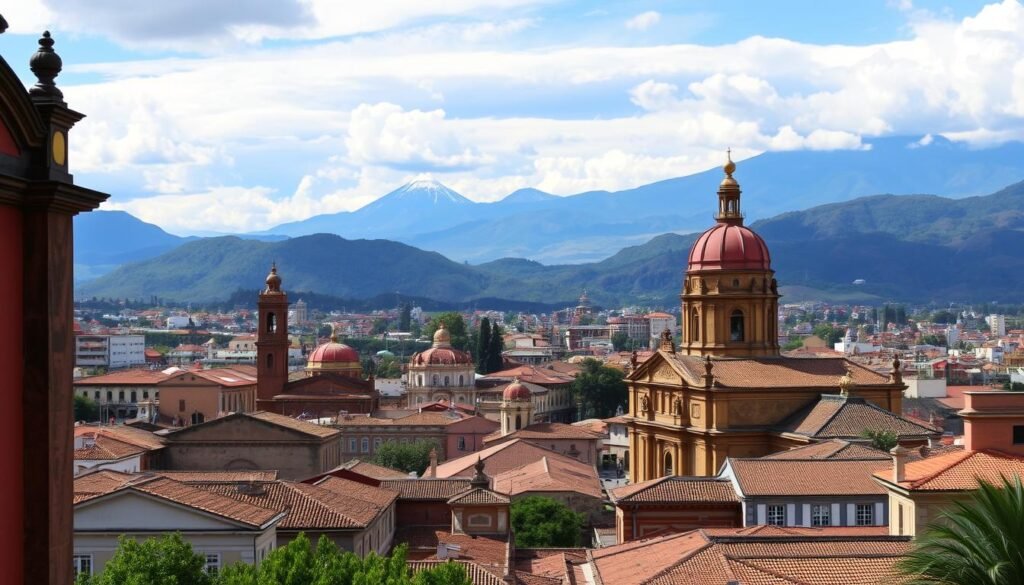
With its rich heritage and breathtaking landscapes, Guatemala is a must-visit destination in Central America. The country boasts a unique blend of cultural and natural attractions that cater to diverse interests.
Antigua and Lake Atitlan
Antigua, a UNESCO World Heritage Site, is renowned for its well-preserved colonial architecture and vibrant cultural scene. Visitors can explore the cobblestone streets, visit the ruins of San Francisco Church, and hike up nearby volcanoes like Volcan Fuego or Acatenango. The city’s numerous pubs, restaurants, and Spanish language schools make it an ideal spot to stay and immerse in the local culture.
Lake Atitlan, often described as one of the world’s most beautiful lakes, is surrounded by volcanoes and dotted with Maya villages. Each village has its distinct character, from spiritual San Marcos to backpacker-friendly San Pedro, offering a rich cultural experience.
Tikal and the Mayan Heritage
Tikal National Park is home to one of Central America‘s most impressive Mayan archaeological sites. The park’s towering temples emerge from the jungle canopy, where visitors can spot monkeys, toucans, and other wildlife. Guatemala’s living Maya heritage is evident throughout the country, particularly in highland towns like Chichicastenango, known for its colorful markets selling traditional textiles and handicrafts.
The cultural significance of these sites is immense, offering insights into the history and traditions of the Maya civilization. Exploring these cities and cultural landmarks provides a deep understanding of Guatemala’s rich cultural heritage.
Discovering El Salvador and Honduras
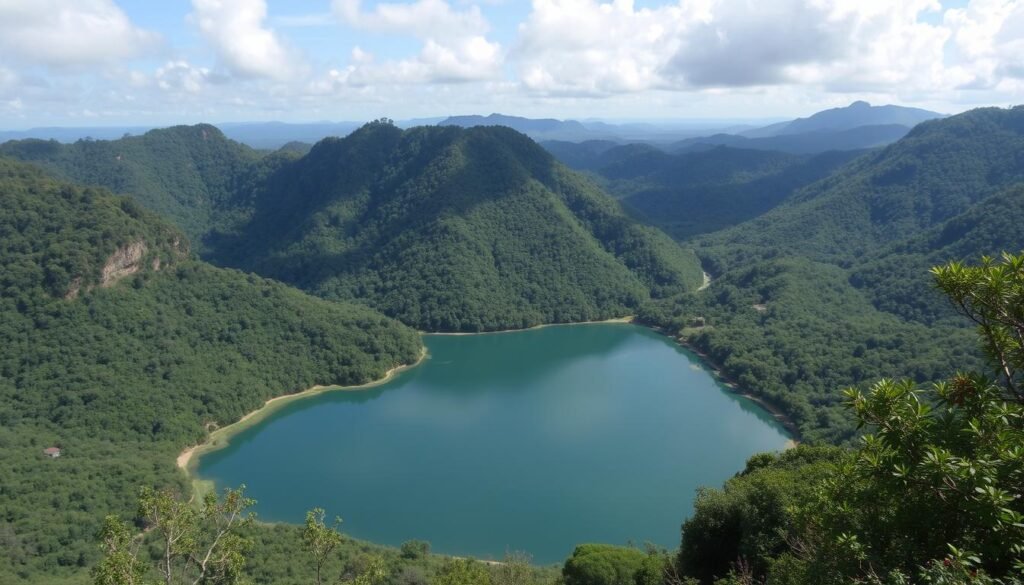
Beyond the beaten path, El Salvador and Honduras beckon adventurers with their unspoiled landscapes and rich cultural heritage. These often-overlooked destinations in Central America offer a plethora of experiences for travelers willing to venture beyond the more popular tourist circuits.
El Salvador’s Beaches and Volcanoes
El Salvador boasts impressive volcanic landscapes, including the Santa Ana Volcano with its stunning emerald crater lake, and Cerro Verde National Park, which offers panoramic views of the surrounding countryside. The country’s Pacific coastline features black sand beaches and world-class surf spots like El Tunco and La Libertad, which have become popular destinations for surfers and beach lovers seeking laid-back vibes.
Honduras’ Bay Islands and Mayan Sites
Honduras’ Bay Islands (Roatan, Utila, and Guanaja) offer some of the most affordable diving in the Caribbean, with Utila particularly known as one of the cheapest places in the world to get PADI certified. Beyond the islands, Honduras is home to the impressive Mayan ruins of Copán, a UNESCO World Heritage site known for its intricate stone carvings, hieroglyphic stairway, and well-preserved stelae, making it a must-visit destination in Central America.
Both El Salvador and Honduras are part of the diverse and vibrant region of Central America, offering unique experiences that showcase the area’s natural beauty and cultural richness, from volcanoes to beaches.
Nicaragua and Costa Rica Highlights
In the heart of Central America, Nicaragua and Costa Rica beckon travelers with their rich cultural heritage and natural beauty. Both countries offer a mix of adventure, history, and eco-tourism that caters to a wide range of travelers.
Nicaragua’s Colonial Cities and Volcanic Landscapes
Nicaragua offers an intriguing blend of colonial architecture, volcanic landscapes, and affordable travel experiences that make it a favorite among budget-conscious travelers exploring Central America. The colonial cities of Granada and León feature colorful Spanish architecture, historic churches, and vibrant cultural scenes.
Adventure seekers can try volcano boarding down Cerro Negro, hike through cloud forests, or explore the twin-volcano island of Ometepe in Lake Nicaragua.
Costa Rica’s Biodiversity and Eco-Tourism
Costa Rica stands out in Central America for its pioneering eco-tourism initiatives, extensive national park system protecting approximately 25% of its territory, and extraordinary biodiversity in its rainforests and cloud forests. Visitors can explore the jungle surroundings of Arenal Volcano, enjoy the hot springs, or visit the cloud forests of Monteverde.
Popular destinations include Manuel Antonio National Park’s wildlife-rich beaches and the laid-back vibe around Puerto Viejo on the Caribbean coast, showcasing Costa Rica’s commitment to preserving its rich biodiversity.
Panama: Where Two Oceans Meet
Panama, a country that bridges Central and South America, is a land of contrasts where modern cities meet pristine natural beauty. This unique blend is evident in its vibrant capital, stunning coastlines, and one of the world’s most impressive engineering feats, the Panama Canal.
The Panama Canal and Panama City
The Panama Canal, first opened in 1914, is an 80-kilometer marvel that has seen nearly a million boats cross between the Pacific and Caribbean oceans. Visitors can witness this engineering feat up close at the Miraflores Locks in Panama City, where massive ships are raised and lowered between oceans. Panama City itself is a striking contrast of modern skyscrapers and historic charm, particularly in the Casco Viejo district, a UNESCO-listed old quarter known for its colonial architecture, trendy restaurants, and vibrant nightlife.
San Blas Islands and Caribbean Coast
Beyond Panama City, the country’s natural beauty shines in its coastlines and islands. The San Blas Islands archipelago, home to the indigenous Guna Yala people, offers crystal-clear waters and authentic cultural interactions, making it one of Central America’s most pristine island experiences. The Caribbean coast of Panama is not just about the San Blas Islands; it also boasts laid-back vibes and diverse wildlife watching opportunities.
Top Activities and Experiences in Central America
From adventure sports to cultural experiences, Central America has something for every kind of traveler. The region’s diverse landscapes and rich heritage make it an ideal destination for those looking to explore new horizons.
Volcano Hiking and Adventure Sports
Central America is home to numerous volcanoes, offering exciting opportunities for hiking and adventure sports. Visitors can hike up Pacaya in Guatemala, known for its frequent eruptions, or explore the geothermal wonders around Arenal in Costa Rica. For the more adventurous, sandboarding down Cerro Negro volcano in Nicaragua is a must-try.
Adventure sports enthusiasts can enjoy a range of activities, including zip-lining through cloud forests, white-water rafting, and surfing along the Pacific and Caribbean coasts.
Diving and Snorkeling Opportunities
The region boasts some of the world’s best scuba diving and snorkeling spots, including the Belize Barrier Reef, Honduras’ Bay Islands, and Panama’s Bocas del Toro. These locations offer a chance to explore vibrant coral reefs and marine life, with certification courses available at competitive prices.
Cultural Experiences and Historical Sites
Central America is steeped in history and culture, with numerous sites to explore. Visitors can discover ancient Mayan ruins like Tikal and Copán, wander through colonial cities, and participate in local festivals. There’s also the opportunity to learn traditional crafts from indigenous artisans, providing a deeper understanding of the region’s heritage.
Wildlife Encounters and Nature Experiences
The region is a haven for wildlife enthusiasts, with opportunities to spot monkeys, sloths, toucans, and quetzals in the rainforests. Visitors can also witness sea turtle nesting and observe marine life during snorkeling or diving excursions. The diverse ecosystems of Central America make it a unique destination for nature lovers.
In conclusion, Central America’s blend of adventure, culture, and nature makes it a compelling destination for travelers. Whether you’re interested in activities like hiking and diving, or exploring the region’s cultural and natural wonders, Central America has something to offer.
Central America on a Budget
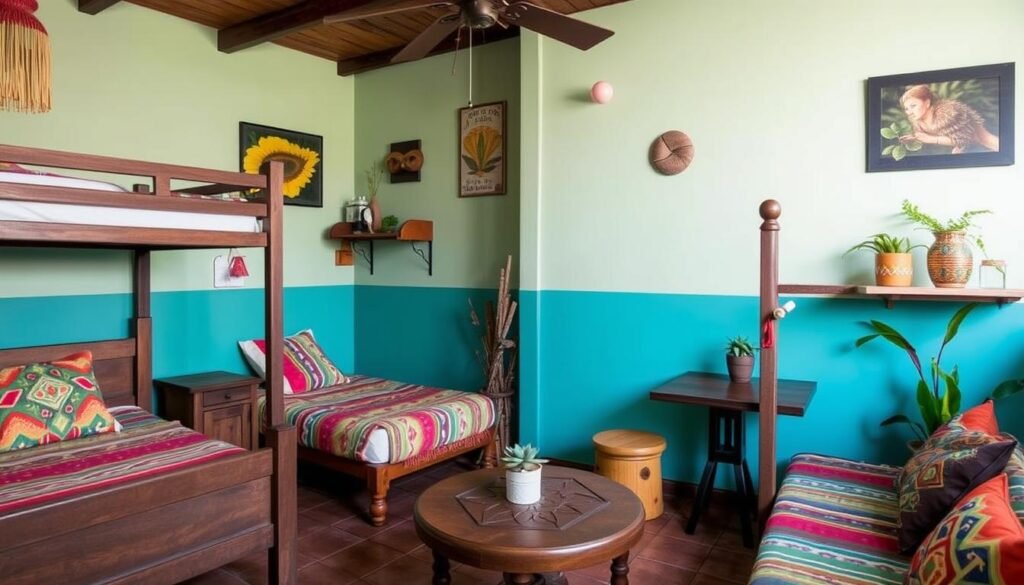
Central America is a treasure trove for travelers on a budget, offering a rich experience without breaking the bank. The region comprises seven countries, each with its unique charm and attractions, catering to various interests and travel styles.
Daily Cost Breakdown by Country
The cost of traveling in Central America varies significantly from one country to another. For instance, Nicaragua, Guatemala, El Salvador, and Honduras are generally more affordable, while Costa Rica, Belize, and Panama tend to be pricier.
Backpackers can comfortably explore most of Central America on $50 USD per day, covering expenses such as hostel dorms, street food, public transportation, and occasional activities. However, Costa Rica and Belize might require a slightly higher daily budget of around $70 USD.
For mid-range travelers, a daily budget of $100 USD can provide a more comfortable experience, including private rooms, restaurant meals, and regular activities. Those with a budget of $200+ per day can enjoy luxury accommodations and private transportation.
Money-Saving Tips for Backpackers
To save money while traveling in Central America, consider eating at local markets and street stalls instead of restaurants. Using public transportation is another cost-effective option, as is traveling during the shoulder season when prices are lower.
Additionally, taking advantage of free activities such as hiking and visiting beaches can significantly reduce expenses. For longer trips that span multiple countries, balancing time between more expensive destinations like Costa Rica with longer stays in more affordable countries like Nicaragua can help maintain a reasonable overall trip budget.
By being mindful of expenses and adopting these strategies, travelers can enjoy all that Central America has to offer without overspending.
Food and Cuisine Across Central America
Central America’s culinary landscape is a vibrant tapestry of flavors and traditions. The region’s cuisine is characterized by its diversity, with each country offering unique specialties that reflect their cultural heritage.

Must-Try Dishes by Country
Central America’s gastronomy is a reflection of its indigenous, Spanish, and African roots. In Guatemala, be sure to try pepián, a rich meat stew, and rellenitos, plantain desserts filled with beans and chocolate. Belizean cuisine offers a blend of Caribbean and Central American flavors, with dishes like stewed chicken with rice and beans. In El Salvador, pupusas are a must-try, while Honduras is known for its baleadas. Nicaragua offers vigorón and nacatamales, and Costa Rica is famous for its casado. Lastly, Panama features sancocho and patacones among its specialties.
Dining Tips and Food Safety
When dining in Central America, it’s essential to prioritize food safety. Drink purified water and avoid consuming raw vegetables and unpeeled fruits in areas with questionable water quality. Opt for street food that is freshly prepared and hot. Meals at local restaurants can range from $6-10 USD, while groceries for a week can cost around $30 USD. Enjoy the local cuisine, and don’t hesitate to try new dishes, but always be mindful of your food choices.
Practical Tips for Central America Travel
Before embarking on your Central America journey, understanding a few practical aspects can significantly enhance your travel experience. From navigating language barriers to preparing for your health, being informed is key.
Language and Communication
Central America’s linguistic landscape varies, with Belize being predominantly English-speaking. In other countries, while many locals in the tourist industry speak English, venturing beyond major cities may present language barriers. Consider downloading translation apps and learning basic Spanish phrases to enhance your interaction with locals.
- Download translation apps for offline use.
- Learn basic Spanish phrases like greetings and expressions of gratitude.
- Understand that Central Americans enunciate clearly, making it easier for non-native speakers to comprehend.
Health and Vaccinations
Consulting a travel doctor is crucial for understanding the necessary health precautions and vaccinations required for travel to Central America. Typically, vaccinations for Hepatitis A, Typhoid, and sometimes Yellow Fever are recommended.
- Consult a travel doctor 4-6 weeks before your trip.
- Carry a basic medical kit with essentials for common travel ailments.
- Stay informed about local health concerns and outbreaks.
Packing Essentials
Packing wisely is crucial for a comfortable and enjoyable trip. Essentials include lightweight, quick-drying clothing, a rain jacket, sturdy walking shoes, insect repellent with DEET, high-SPF sunscreen, and a water bottle with a built-in filter.
- Pack versatile clothing for varying climates.
- Include a good rain jacket, especially during the green season.
- Don’t forget sun protection and insect repellent.
Additional practical considerations include purchasing comprehensive travel insurance that covers medical evacuation, keeping digital and physical copies of important documents, and bringing a mix of payment methods, including US dollars, which are widely accepted throughout the region.
Conclusion: Your Central America Adventure Awaits
With its rich cultural heritage and breathtaking natural beauty, Central America is a traveler’s paradise waiting to be explored. The region offers an incredible diversity of experiences packed into a relatively small geographical area, making it possible to experience multiple countries, ecosystems, and cultures in a single trip.
Whether you’re drawn to ancient Mayan ruins, colonial cities, pristine beaches, volcanic landscapes, or lush rainforests, Central America provides authentic experiences that rival more heavily touristed destinations at a fraction of the cost. The region continues to evolve as a travel destination, with improving infrastructure, increasing safety in many areas, and a growing recognition of its unique appeal to travelers seeking authentic experiences off the beaten path.
Planning your ultimate Central America adventure requires some research and flexibility, but the rewards of discovering this remarkable region far outweigh the effort involved in navigating its occasional challenges. The time to explore Central America is now – before some of its hidden gems become mainstream destinations, offering you the chance to experience its natural wonders, rich cultural heritage, and warm hospitality while they remain authentic and relatively undiscovered.
Embarking on a trip to Central America is a decision you won’t regret. With its diverse landscapes, vibrant cultures, and historical sites, the region is poised to deliver an unforgettable travel experience. So, start planning your ultimate Central America adventure today and get ready to create memories that will last a lifetime.

